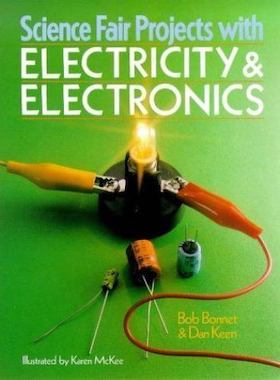
-----
What chemical reaction happens when you put copper into silver nitrate?
Q. I need help with chemistry lab. When you mix silver nitrate in with a copper wire, can anyone tell me in words the chemical equation that represents the reaction that occurred.
Nate N [last name deleted for privacy by Editor]chemistry class - Ellsworth, Wisconsin
2004
A. The silver nitrate is in solution and the metallic copper will dissolve to form copper nitrate; as it does so, the silver in solution will be precipitated out as metallic silver. That is, the silver in solution is exchanged for copper and the copper that is not in solution is substituted for silver. Hope this makes sense!
Alternatively:
Cu(0) + 2AgNO3 = Cu(NO3)2 + Ag(0)

Trevor Crichton
R&D practical scientist
Chesham, Bucks, UK
2004
A. No offense to the guy who wrote the response above, but the balanced chemical equation is a little off. It would be:
Cu + 2AgNO3 ---> Cu(NO3)2 + 2Ag
- Rutherglen, Ontario, Canada
2006
Ed. note: Thanks Jonathan, you are correct. Trevor forgot the '2' in front of 'Ag" on the righthand side of the equation.
Person above is wrong because the equation has the 2 and 3 so they would be carried over instead of staying with the Ag
Eden M [last name deleted for privacy by Editor]- Canberra A.C.T Australia
2007
No offense to Eden, but I don't understand what you're saying :-)
As far as I can see, Jonathan's response is complete and correct.
Yes, Trevor Crichton's response does lack the required "2" before the Ag on the right hand side (his number 0 in parentheses has nothing to do with oxygen, but means the metal is at an oxidation state of zero, i.e., metallic form).

Ted Mooney, P.E.
Striving to live Aloha
finishing.com - Pine Beach, New Jersey
Ted is available for instant help
or longer-term assistance.
2007
![]() You guys are just way too smart! :-Z
You guys are just way too smart! :-Z
- Austin, Texas
2007
Hey Eden, I think you're right, I even checked with Mr. Rigg at school and he says so.
James C [last name deleted for privacy by Editor]- Canberra, A.C.T., Australia
2007
Hi James. Please invite Mr. Rigg to the discussion because I don't understand what you and Eden are saying, and I see nothing wrong with Jonathan's equation.
Regards,

Ted Mooney, P.E.
Striving to live Aloha
finishing.com - Pine Beach, New Jersey
Ted is available for instant help
or longer-term assistance.
I'm pretty sure that Jonathan's is right
Dan M [last name deleted for privacy by Editor]- New York, New York
2007
Ok, the one [from Jonathan] is def right: Cu+2AgNO3-->Cu(NO3)2+2Ag
Natasha H [last name deleted for privacy by Editor]- Canada
October 19, 2008
I would have to say it would be
Cu+2Ag(NO3) => 2Ag+Cu(NO3)2
- plattsmouth, Nebraska
December 16, 2008
Copper is multivalent, so can't it be two ways?
January 9, 2008About the silver nitrate and copper reaction. we must consider it in two different directions. One would be that copper is a transition metal, so therefore it's multivalent. It can have a 1+ or 2+ charge, right?
if you consider it with the 1+ charge, the balanced chemical equation would be:
Cu(s) + AgNO3(aq) = CuNO3(aq) + Ag(s)
- Montreal, Quebec, Canada
I don't think so, Fleur; Jonathan was correct.
Although you are right that copper is multivalent and is capable of forming certain compounds wherein the copper is at an oxidation state of +1, that does not mean that when you treat copper with silver nitrate that it can/will combine with the nitrate and maintain the +1 state. And in fact, it doesn't. In simple salts like copper nitrate, copper sulphate, copper chloride, etc., copper is always in the +2 oxidation state.

Ted Mooney, P.E.
Striving to live Aloha
finishing.com - Pine Beach, New Jersey
Ted is available for instant help
or longer-term assistance.
FLEUR you are very correct over all, what you say is true and your equation is completely balanced. I don't now why others put a coefficient of 2 on silver, with that you unbalance the charge between nitrate and silver because the charge of nitrate is -1 and silver +1 if you put a 2 to silver its charge converts to +2, therefore it does not cancels the charge of nitrate and that compound can't exist, and over all some in on the other side of the equation just put one silver when in the other side they put two. MATTER IS NEITHER CREATED OR DESTROYED.
Rene M [last name deleted for privacy by Editor]- Monterrey, Mexico
October 29, 2009
October 29, 2009
Hi, Rene.
The "2" is not a coefficient on the silver, it's a coefficient on the silver nitrate, i.e., 2 molecules of silver nitrate.
You are correct that Fleur's equation is balanced, but although balanced, it is not the way the reaction proceeds because copper nitrate is not CuNO3, it is Cu(NO3)2 because copper does not form monovalent compounds with nitrate, but divalent ones.
The alternative equation is also balanced and does not call for matter to be created or destroyed. Let's express the reaction in words in case someone is reading the chemical notation incorrectly:
On the left side we have one atom of copper metal at oxidation state zero and two molecules of silver nitrate wherein the oxidation state of silver is plus 1 and the oxidation state of nitrate is minus one in each molecule. On the left side therefore we have one atom of copper, two atoms of silver, and two nitrate radicals.
On the right side we have two atoms of silver metal at oxidation state zero and one molecule of copper nitrate wherein the oxidation state of the copper is plus two and the oxidation state of each of two nitrate radicals is -1. On the right side therefore we have one atom of copper, two atoms of silver, and two nitrate radicals.
Regards,

Ted Mooney, P.E.
Striving to live Aloha
finishing.com - Pine Beach, New Jersey
Ted is available for instant help
or longer-term assistance.
January 17, 2008
I just did this lab in chemistry and we were told that the copper is a +2 charge so the equation would be:
Cu+2AgNO3 -> Cu(NO3)2+ 2Ag
the 2 in front of AgNO3 balances the
(NO3)2 and the 2 in front of Ag balances the 2 in front of AgNO3
- Cherry Hill, New Jersey
Thanks, Ricky, you are right. And when you did the experiment, did the solution also turn bluish, indicating the presence of Cu++ ions?

Ted Mooney, P.E.
Striving to live Aloha
finishing.com - Pine Beach, New Jersey
Ted is available for instant help
or longer-term assistance.
January 18, 2008
Yes, the liquid does turn a blueish tint.
Topsy K [last name deleted for privacy by Editor]- 14th Republic of Russia
May 7, 2008
No offense but we just did this in class and the copper nitrate ⇦ on eBay or Amazon [affil link] solution does not turn a bluish color
Jerry R [last name deleted for privacy by Editor]- Vancouver, British Columbia, Canada
January 12, 2010
(you are on the 1st page of the thread) Next page >
Q, A, or Comment on THIS thread -or- Start a NEW Thread


